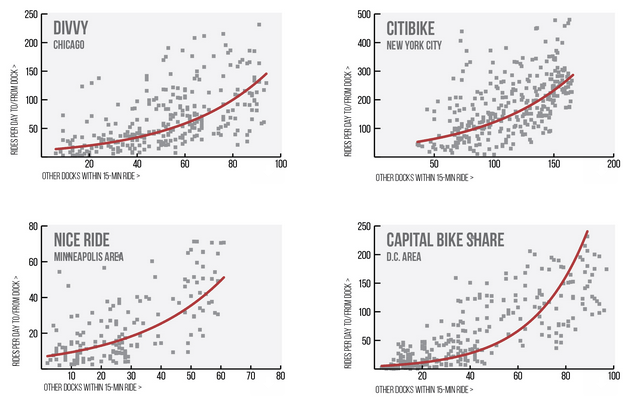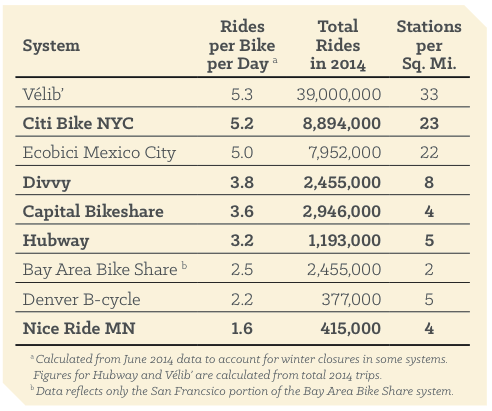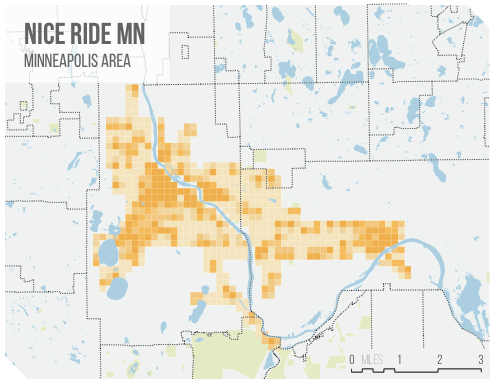
A new study from the National Association of City Transportation Officials [PDF] adds credence to the theory that station density is a key factor in whether a bike-share system will flourish or flop.

In its analysis of bike-share systems across the U.S., NACTO found that stations that are close to other stations see more use. In addition, bike-share systems with higher overall density -- New York and Paris are leaders -- tend to have higher ridership than more dispersed systems like Minneapolis's Nice Ride.
Riders from systems around the U.S. report the primary reason they use bike-share is because it is easier or more convenient than available alternatives. But users don't want to have to travel a long distance searching for a place to pick up or return a bike. So the accessibility of bike stations -- and, crucially, accessibility by walking -- is a primary determinant of their usefulness.
"Research on transit users finds that most people will walk no more than a 1/2 mile to get to commuter rail, with a large drop-off beyond a 1/4 mile," the report says. "The distance someone will walk to use a bike appears to be much smaller -- about 1,000 feet or 5 minutes walking."
Furthermore, placing stations close together across a contiguous area offers "exponentially" more destinations than those that are isolated.
NACTO recommends that cities place stations no farther than 1,000 feet apart, anywhere throughout the system. That's about 28 stations per square mile.

Unfortunately, many cities bow to political pressure to spread stations over a wide geographic area in order to accommodate various constituencies. NACTO says stations tend to be especially spread out in low-income neighborhoods, which contributes to lower usage by lower-income groups overall.
The report advises cities considering bike-share to go big -- make ambitious investments in bike stations and place stations close together in a small geographic area -- with intent to expand. Vary the size of the stations -- the number of bikes per dock -- based on expected demand, but not the distance between stations, because the distance people are willing to walk doesn't change. Finally, for cities that already have bike-share, NACTO says many of them could improve performance by repairing gaps with "infill" stations.





